Hong Kong was once known as the Hollywood of the east as the whole city was just like a big film studio. Every corner of this inspiringly beautiful city, from each small alley to big avenues, has traces of many famous cinematic scenes from movies in them.
[rpi]
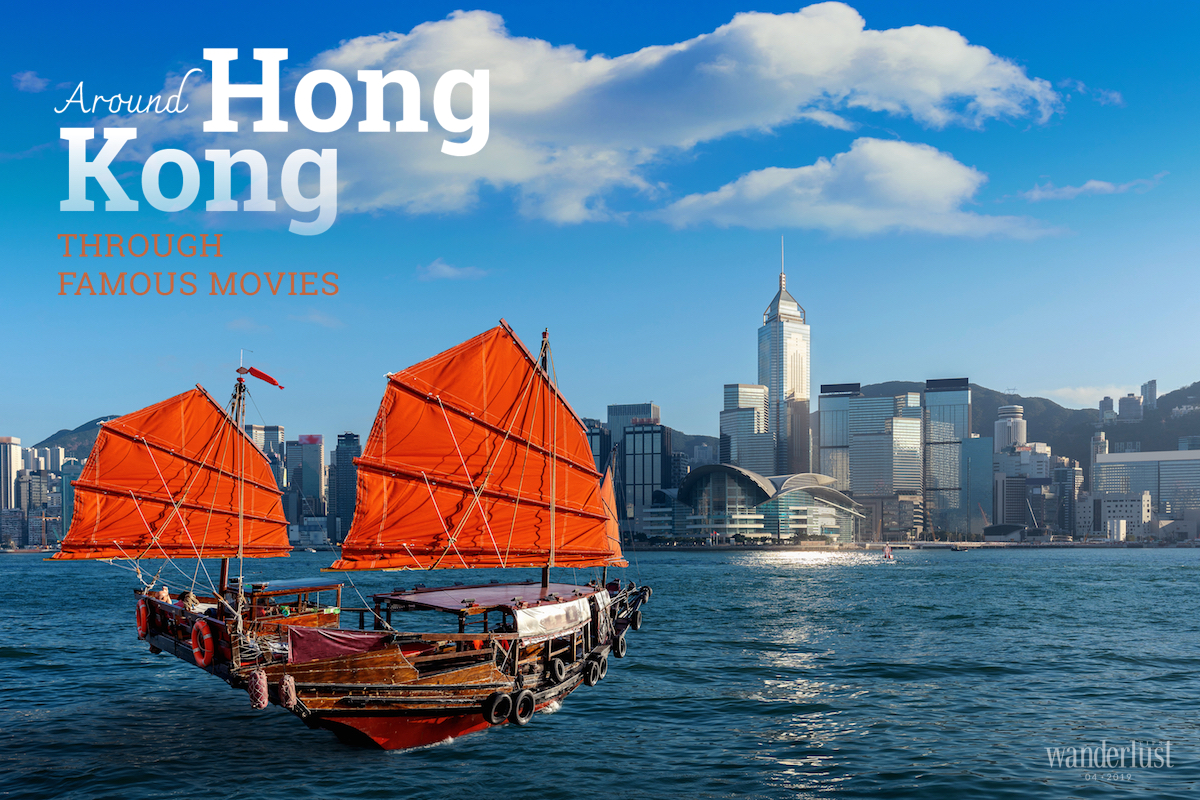
Hong Kong was in my childhood mind before I could even speak Vietnamese properly or had any idea about travelling outside of my hometown. In the 1990s, Hong Kong movies and TVB dramas used to be part of Hanoian’s entertainment culture, when renting VHS tapes was still popular. I wasn’t able to understand what the movies were about in my innocent childhood years, but somehow, the scenes and characters remained ingrained in my memory, and have come back to me at many unexpected moments. With a love for Hong Kong cinema and travelling, I have been planning for years for an adventure to visit the locations of the scenes from my favourite movies. Some locations are captured in mind from the movies I’ve watched, some from my research in magazine articles and books. I had imagined that this journey would be full of joy but also exhaustion, as I intended to spend every day wandering through all the hidden corners in mostly nontouristy areas. Besides that, I have no one to share my Hong Kong film passion with who has enough interest to take this trip with me, so I started my journey all alone.
TSIM SHA TSUI – SANCTUARY OF LOVE, CULTURAL CENTRE OR HIDEOUT OF THE UNDERWORLD
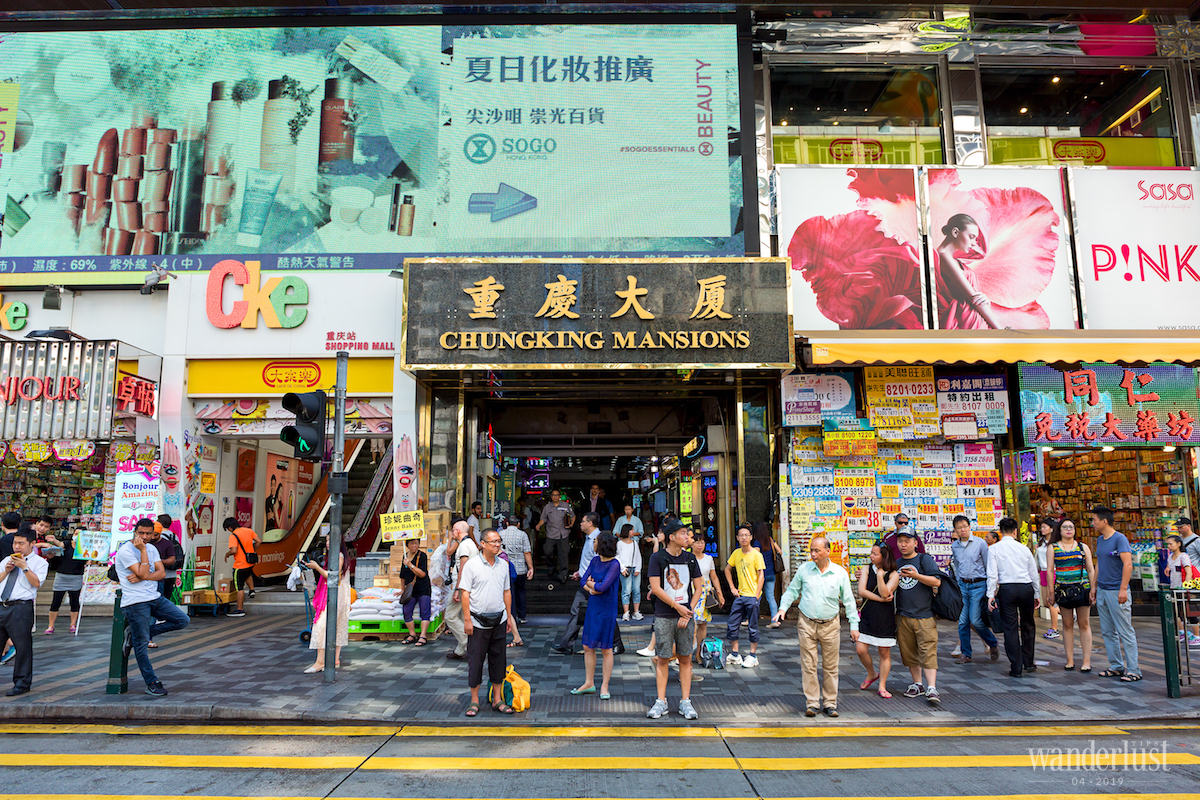
On this first trip abroad alone, I decided to rent a dorm in a hostel in Chungking Mansions. Of course, this is a hostel area with many affordable places for travellers to stay, but more importantly, my favourite movie Chungking Express was shot here.
Chungking Mansions main gate is on Nathan Road, a major thoroughfare that connects Tsim Sha Tsui with other central Kowloon areas such as Mongkok and Yau Ma Tei. The iconic building is not only the inspiration for the title of Chungking Express, but it’s also the main setting for the first half of the movie where the meeting of the two main characters takes place. The unexpected, dreamy, surreal encounter between a broken-hearted policeman (played by Jin Cheng Wu) and a mysterious woman (played by Brigitte Lin Ching Hsi) where they even don’t know each other’s names. Chungking Mansions is depicted in the movie as dimly lit and smokey with endless dramatic chases between police and criminals, and underground gangs hunting each other down. At its Premiere at the Venice Film Festival in 1994, director Wong Kar Wai admitted that he chose the setting for the film in Chungking Mansions due to memories from his childhood. He used to live in a neighbourhood nearby and was forbidden to enter the building. Not until his teenage years could he understand why his mum had been so worried and how chaotic and dangerous it was inside Chungking Mansions.
Just as it is depicted in the movie and through Wong Kar Wai’s words, the building looks huge on the outside, but the space inside is cramped and narrow. The building is divided into several blocks each with its own lift which seem to have endlessly overcrowded queues in front of them all the time. Nowadays, Chungking Mansions has been turned into cheap hostels all crammed in closely together along narrow aisles full of people. The vibe can be bustling and full of excitement for a party-lover, but too noisy for those seeking something more peaceful. There are more immigrants than locals in Chungking Mansions, mostly from India, the Philippines or South West Asia by their looks. The wealthier run hostels and rental rooms, the poorer work as porters for stores and other businesses. The rest open kiosks on the ground floor selling everything from fruit and snacks, cheap household goods and electrical devices to more sensitive products such as sex toys and magazines. At the entrance of Chungking Mansions and in the neighbourhood surrounding it, I sometimes came across African men in suits, smelling of their distinctive perfume, who kept grabbing the hands of girls passing by and saying “I love you”. I’m not quite sure but suspect they might be working as gigolos or pimps from the red-light districts. I was more than a little nervous on first arriving at Chungking Mansions.
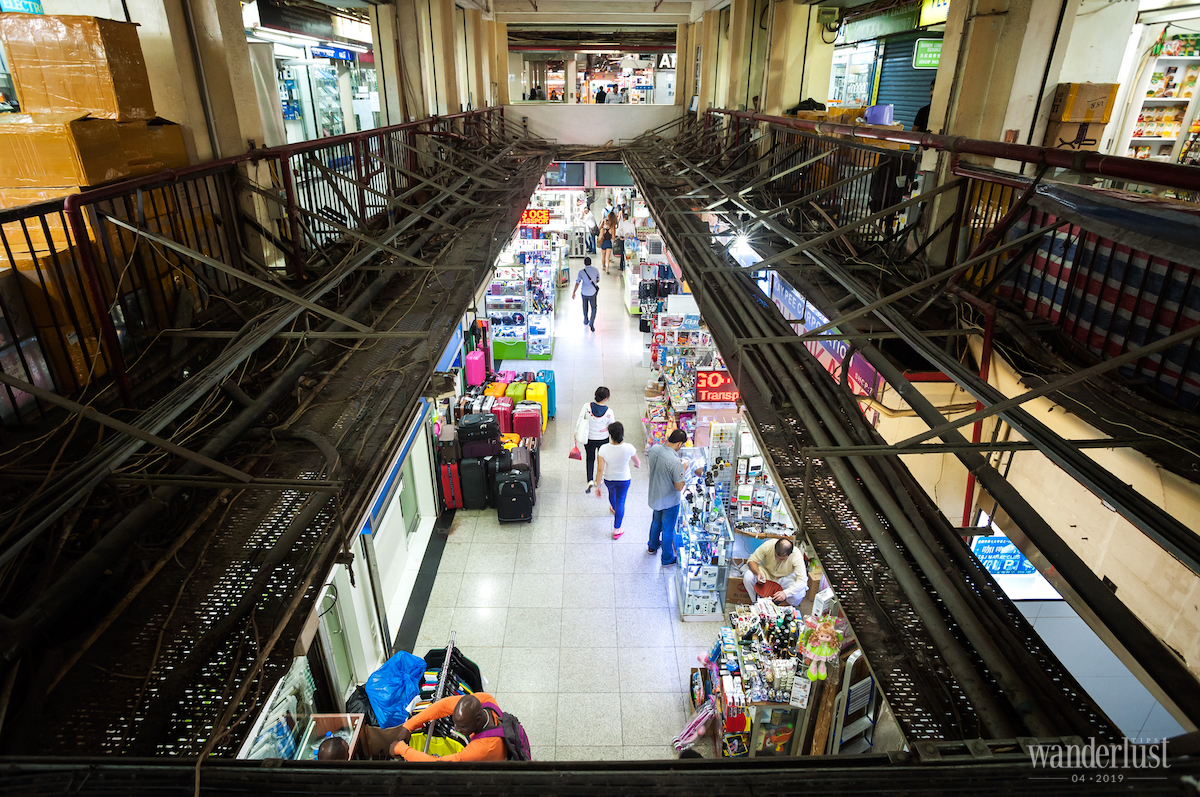
Already not really fond of crowds and having heard about crimes committed here, I had scared myself by imagining multiple bad scenarios which could happen in a week-long stay. Pauline, one of my Instagram friends, was also worried for me when she knew I was staying in Chungking Mansions. Juno, my friend from Hong Kong of the same age, always insisted on walking me to my hostel, watching me safely entering the lift before going home. For them, it isn’t even safe for the locals here, let alone a solo female traveller like me. Fortunately, my journey turned out alright, the security in Hong Kong nowadays is much better than before, and actually, the residents of Chungking Mansions were not as scary as what I had imagined. But somehow, the fear I had beared in mind helped me experience the mysterious atmosphere Wong Kar Wai had created in his film Chungking Express. Besides the modern and fancy image of Hong Kong that I knew from tourist advertisements, I had the chance to experience another Hong Kong by diving into the hustle and bustle of the unorthodox lifestyle in Chungking Mansions, where there still is the classic, exotic beauty that captured my heart in the cinematic scenes of the old movies. On top of this, being in the global tourist hub of Hong Kong, Chungking Mansions connected me with many friends from all over the world.
From Chungking Mansions, it took me just a few minutes to walk to Victoria Harbour and the Avenue of Stars. The modern and spectacular scenery here is the backdrop for many love stories in TVB dramas, from dating to breaking up. Sometimes though, directors can turn this place into the setting for dramatic police chases. Maybe the chaotic situation in Tsim Sha Tsui before 1997 is so notorious in the memories of Hong Kong’s people it has turned this place into both a sanctuary of love as well as an underworld hideaway in many films and drama productions.
YAU MA TEI – NOTORIOUS POLICE STATION, CITY’S BIGGEST FRUIT MARKET AND REMNANTS OF AN OLD HONG KONG FROM HISTORY.
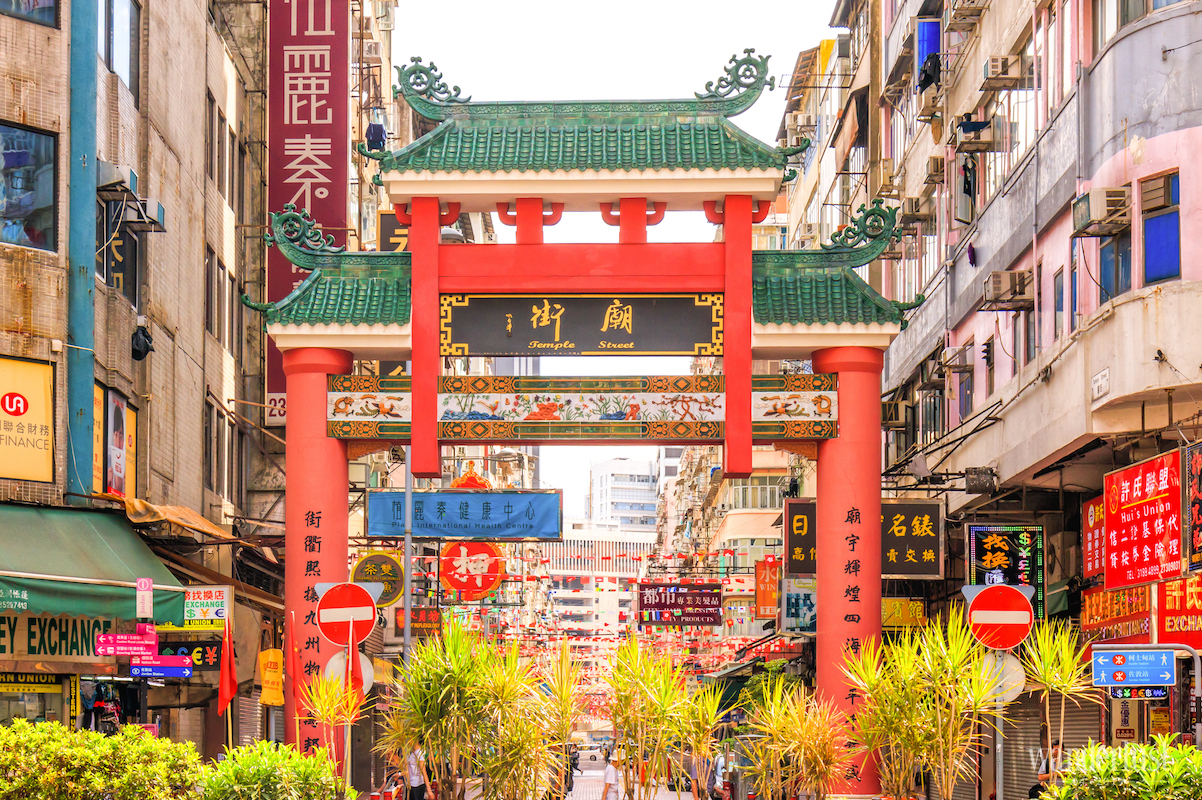
The Hong Kong film industry created its reputation in action movies and dramas. The Hong Kong Police from films in Vietnamese people’s memories are mighty in their uniform, handsome in daily life, smart when investigating and fierce when chasing criminals. Everyone knows the iconic line: “Hello, we are from West Kowloon Special Criminal Case Unit. Please come with us to the station to support our investigations. You have the right to remain silent. Anything you say or do may be used as evidence against you in a court of law”. West Kowloon Police Headquarters has become such a vivid image in my mind of a scene just like that there was no way I would miss out on this location on this journey.
Even though the West Kowloon Police Headquarters is an actual location, scenes were usually filmed at the old headquarters of the Yau Ma Tei police, located on Guang Dong Street in Yau Ma Tei. The three-storey building spread over two facade creates a majestic scene at the crossroads. The design of the building is consistent with other Hong Kong police headquarters under British colonial rule. While the light greyblue colour combination creates solemnity, the arched Gothic domes soften its look. In scenes, the indoor footage was shot in a studio, but outdoor scenes were always filmed in front of the facades of Yau Ma Tei Police Headquarters. It appeared in legendary movies such as Infernal Affairs and Young and Dangerous or famous TVB series including Armed Reaction, Take My Word For It and Emergency Unit. Yau Ma Tei Police have moved location, and the building has been closed temporarily but still kept intact, becoming a tourist attraction for Hong Kong film lovers.
From the old police headquarters, I found my way to Yau Ma Tei Fruit Market. In the comedy series My Better Half, Ko Lai Sum (played by Maggie Cheung) sells durian in this market where she is known as the “big sister” of the market. Yau Ma Tei Market is a flea market with many stalls filled with various colourful tropical fruits with focal points of murals on the walls in between them. Hong Kong has limited agricultural land and fruit is mostly imported, so the price is high even at wholesale markets like Yau Ma Tei; nonetheless, there are more options for fruit here, and the prices are still reasonable compared to other markets. What impressed me most was instead of selling various fruits like in Vietnam, there are stalls that only sell one kind of fruit. For instance, if they only sell tangerines, the whole family peels the skin of each and every tangerine. I guess they supply restaurants, so they have to do it that carefully.
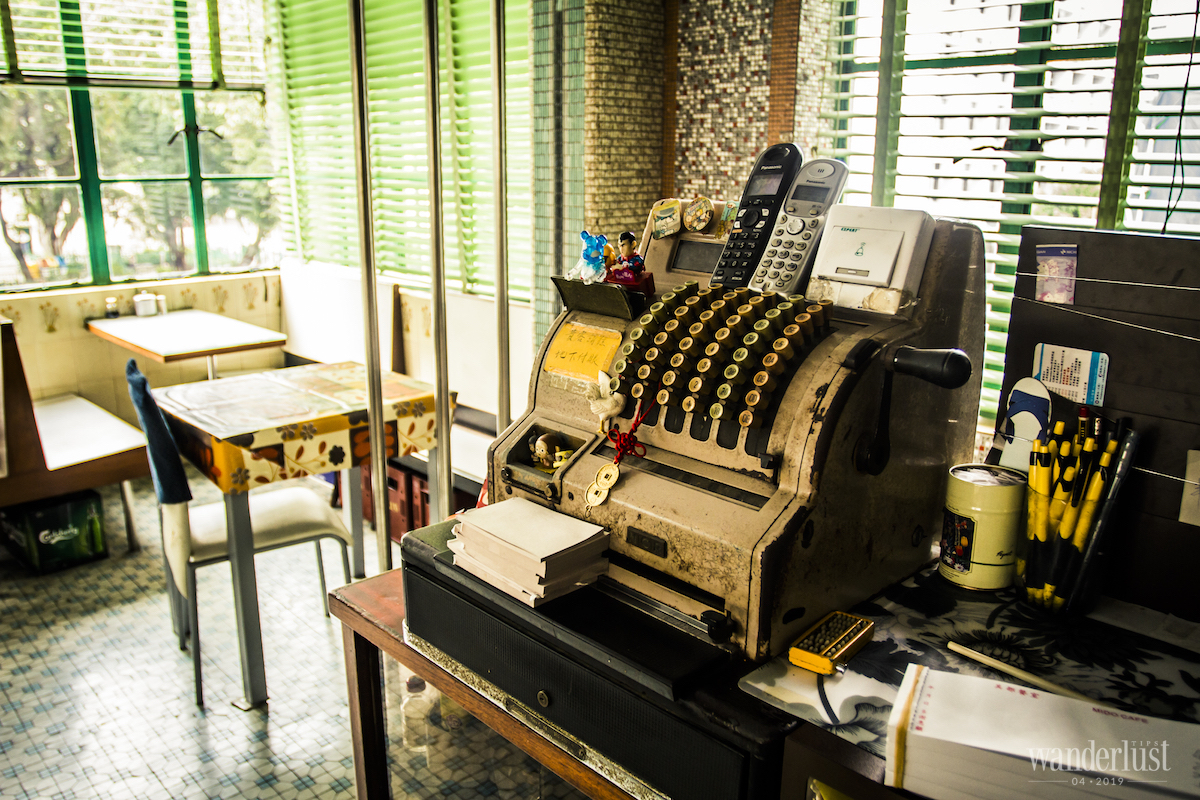
I remember Yau Ma Tei in TVB films being depicted as the impoverished area of Hong Kong. In the drama Mystery of Love (2010), the female lead (played by Tavia Yeung) is rejected by her lover’s family due to the prejudice against Yau Ma Tei residents as she is seen as being poor, uneducated and inadequate to their family. Wandering around the market, I understood the films weren’t exaggerating; nevertheless, I was attracted to the down-toearth beauty. Yau Ma Tei still stays true to the traditional lifestyle of the Hong Kong of the good old days. There are no big buildings or skyscrapers like in Tsim Sha Tsui, Central or Wan Chai, only old-fashioned apartments, stores and restaurants. Temple Street is always crowded through the day and night with masses of street food kiosks, the fragrant smells of food cooking, along with the sound of people talking, laughing and cheering. In this neighbourhood, there are fortune telling stalls, together with public karaoke. This was the first time I ever witnessed a monitor, speaker and microphone right there on a pedestrian laneway, with people ordering drinks and finger food while singing karaoke carefree in public.
Not too far away from Temple street lies the old coffee shop Mido, still with the same look after half a century. The coffee shop witnessed the Hong Kong film industry in the good old days as in the 50s and 60s this used to be the gathering place of local actors and film producers. I was inspired by the beautiful stories of Mido when I was browsing through travel books before my trip to Hong Kong. When I came here, I realised right away this was the setting of a meeting between two policemen played by Andy Lau and Kent Cheng in the movie Chasing the Dragon released in 2017.
The coffee shop was closed the first two times I tried to visit, but it was just too good to be missed out on so I decided to come back for a third time, and luckily, I was able to have my last lunch here just a few hours before travelling to Macau. Due to its reputation for good food, Mido is often fully booked for most of the day, and the owners see no need for more elaborate decorations or refurbishment. Simple wooden tables and chairs near the window, just like what was in the films. The autumn sunlight shined through the curtains, reflecting off the old blue tiled walls, brightening the whole room with a sparklingly miraculous light.
Hong Kong is like a big movie set, the more I explore, the more interesting things become. Not only being the setting for domestic films, sometimes Hollywood films are also filmed in its iconic scenery. Tsim Sha Tsui, Yau Ma Tei and many other residential areas have been brought into cinematic scenes from real life with their own original beauty. There’s Chek Lap Kok airport with the beautiful aircrew in Triumph In the Skies, Central piers where all the reunions and farewells take place, and sometimes being turned into the crime scene of a suicide or assassination. There’s Hong Kong university that holds all the memories of the broken love of the couple (played by Shu Qi and Leon Lai) in City of Glass. There’s the outdoor elevator in Central – where Faye Wong stalked her unrequited love Tony Leung in Chungking Express.
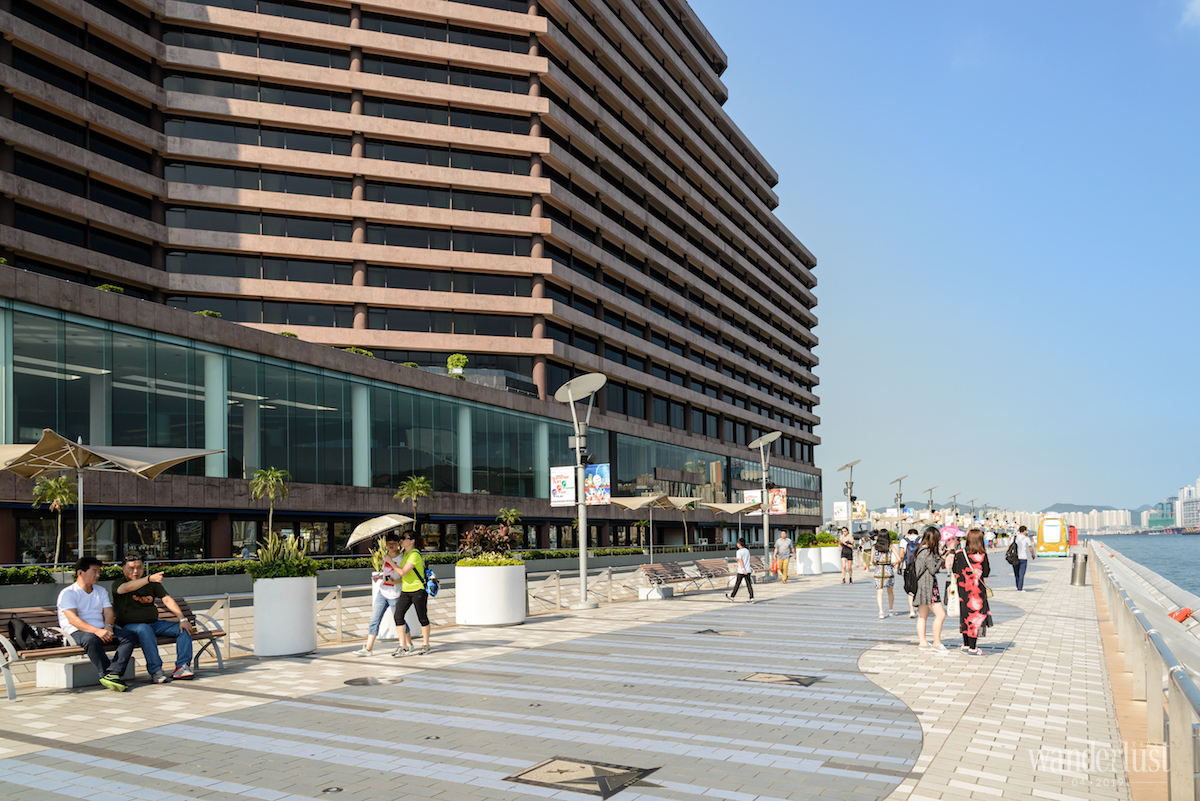
Five days was not enough for me to visit all of Hong Kong’s nostalgic corners, I’ll have to save the dream of living in more movie scenes for future adventures to come.
W.TIPS
GENERAL INFORMATION
Hong Kong is a Special Administrative Region on the eastern side of the Pearl River estuary in southern China. Hong Kong became a colony of the British Empire in 1842. However, the entire territory was transferred back to China in 1997. The geography of Hong Kong primarily consists of Hong Kong Island, Lantao Island, Kowloon Peninsula, and the New Territories.
>> Tsim Sha Tsui is administratively part of Yau Tsim Mong District, located on the tip of Kowloon Peninsula overlooking Victoria Harbour, opposite Central. Tsim Sha Tsui is a major tourist hub in metropolitan Hong Kong, with many high-end shops and restaurants that cater to tourists. Many of Hong Kong’s museums are located in the area.
>> Yau Ma Tei is also an area of the Yau Tsim Mong District in the south of Kowloon Peninsula in Hong Kong. The district is mainly a mixed residential and retail area. Every night there is a market selling many different kinds of products including clothes, decorations, VCDs and toys in Temple Street, a street in the area where the famous Tin Hau Temple was built in 1876. Austin Road marks the southern border of Yau Ma Tei with Tsim Sha Tsui.
BEST TIME TO TRAVEL
Hong Kong has a humid subtropical climate similar to northern Vietnam, and there is no significant difference in temperature between the two. The best time to visit Hong Kong is autumn, winter and new year. Avoid July and August due to storms and typhoons.
TRANSPORTATION
>> From Vietnam, there are direct flights to Hong Kong International Airport by Vietnam Airlines, Hong Kong Airlines, Cathay Pacific and Jetstar Pacific. Vietjet Air only operates flights from Ho Chi Minh City to Hong Kong.
>> In Hong Kong purchase an Octopus card when you arrive at the airport. This is the “magic card” that is accepted for 11 kinds of transportation including the MTR, double-decker buses, minibuses, trams and ferries. The card can also be used in supermarkets and convenience stores.
From the airport to Tsim Sha Tsui and other central areas in Hong Kong, you can choose to go by either double-decker bus or MTR on their respective routes.
MONEY
The Hong Kong Dollar is the official currency of Hong Kong. 1HKD ~ 2.954VND (current exchange rate). You can exchange money in Vietnam or at Hong Kong airport. If you exchange at the airport, it’s better to bring USD. There are many choices depending on your budget, from high-quality services to inexpensive ones. For a tight budget, you can prepare 12.000.000 – 15.000.000 VND cash, together with credit cards for spending and shopping in Hong Kong.
Wanderlust Tips


[…] shopping, dining and entertainment destinations in Hong Kong. Situated on the north shore of Hong Kong Island, the street is jam-packed with restaurants, shopping hotspots and luxury fashion retailers […]
[…] is a popular treat when winter comes. If you are strolling along the streets of Sheung Wan in Hong Kong, you will find small restaurants making these traditional […]
[…] life and given me many exciting opportunities. It has also led me to my soul mate and ‘partner in crime’. Life is a journey, and the more I travel, the more I realise how small I am, but my confidence […]